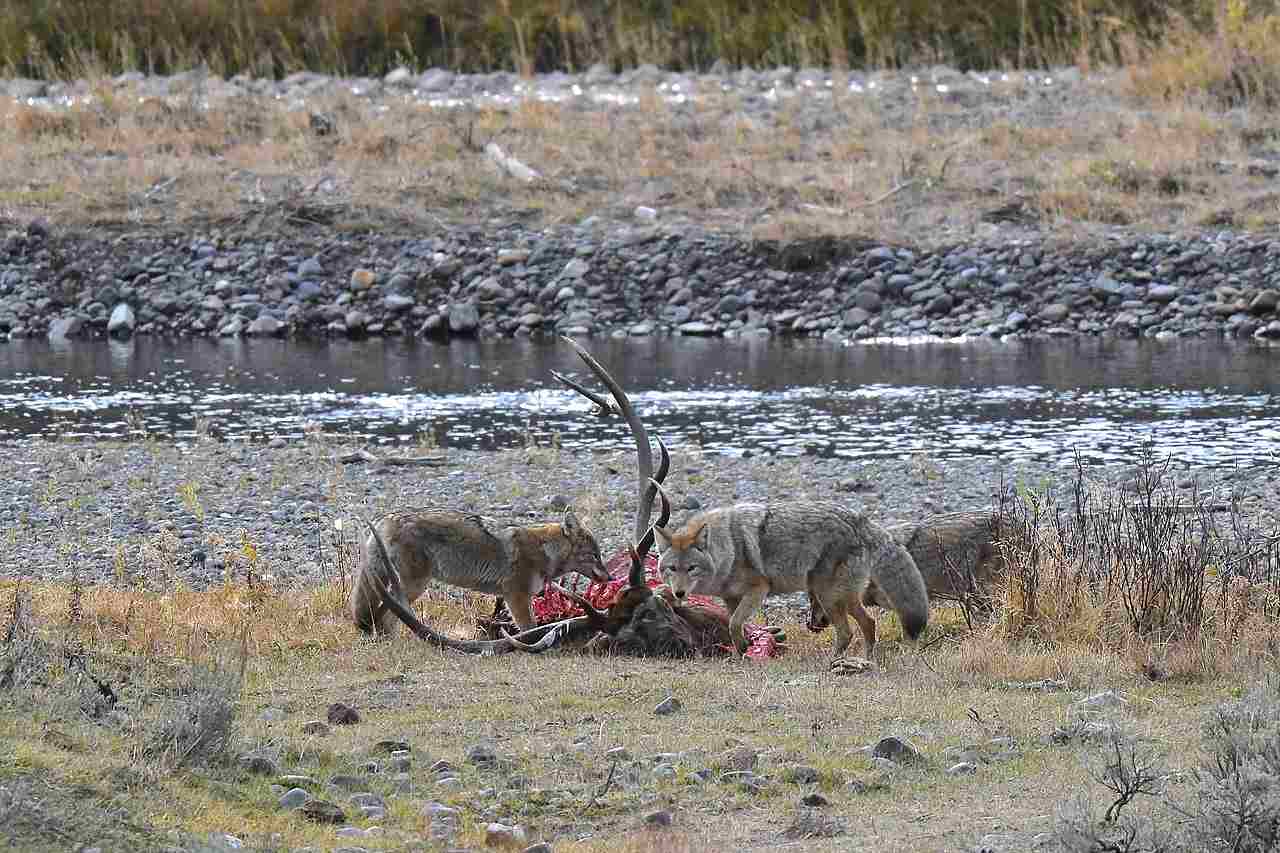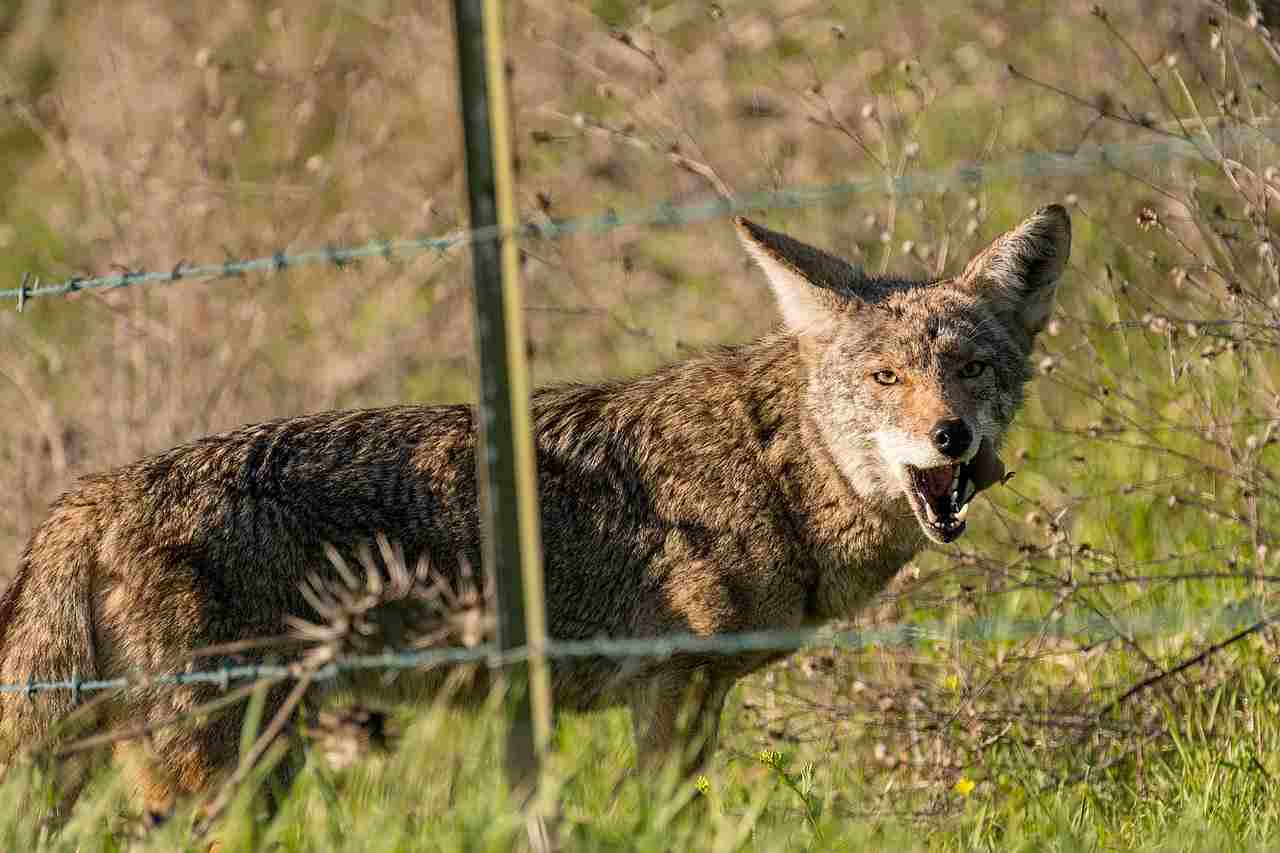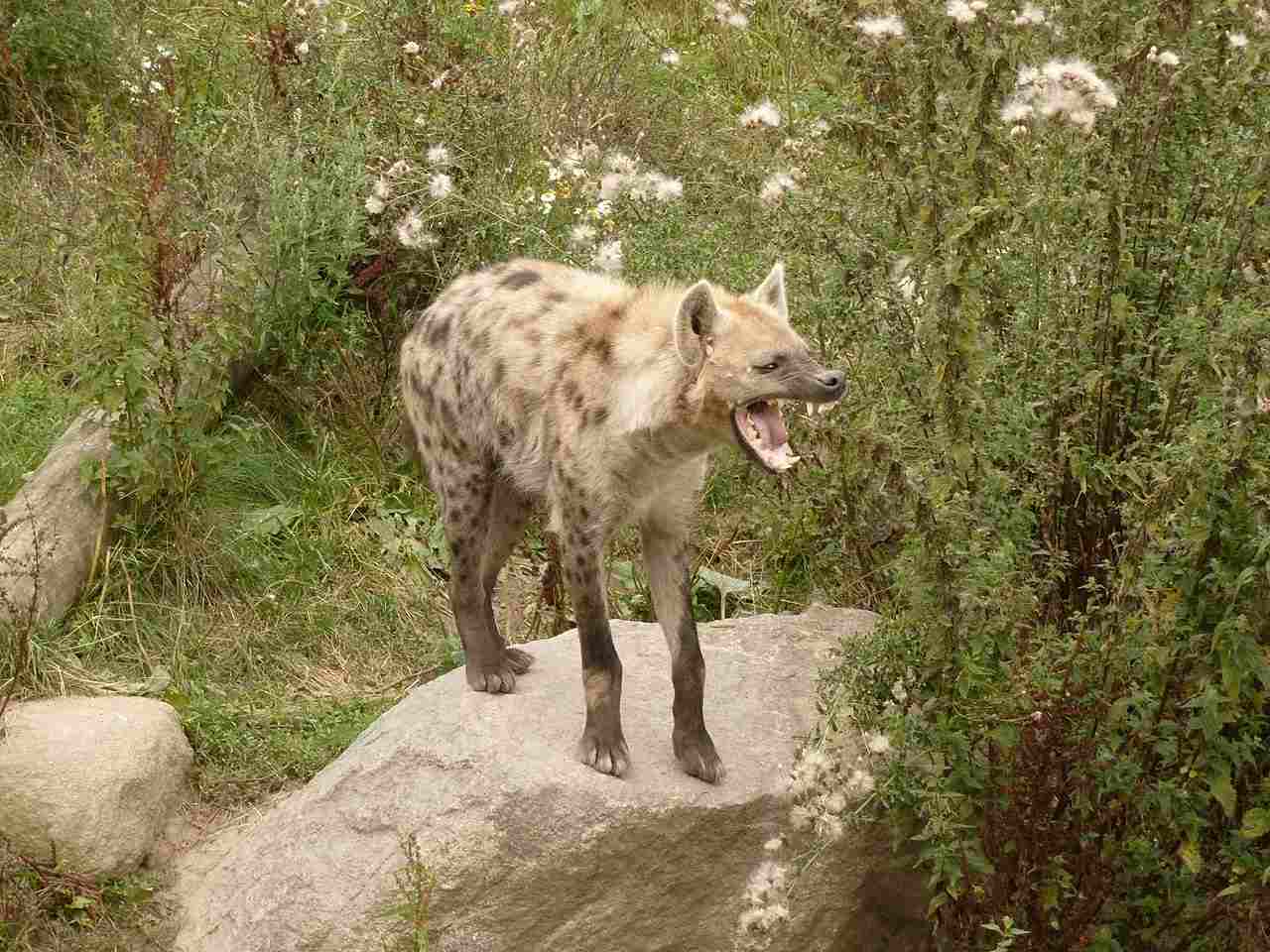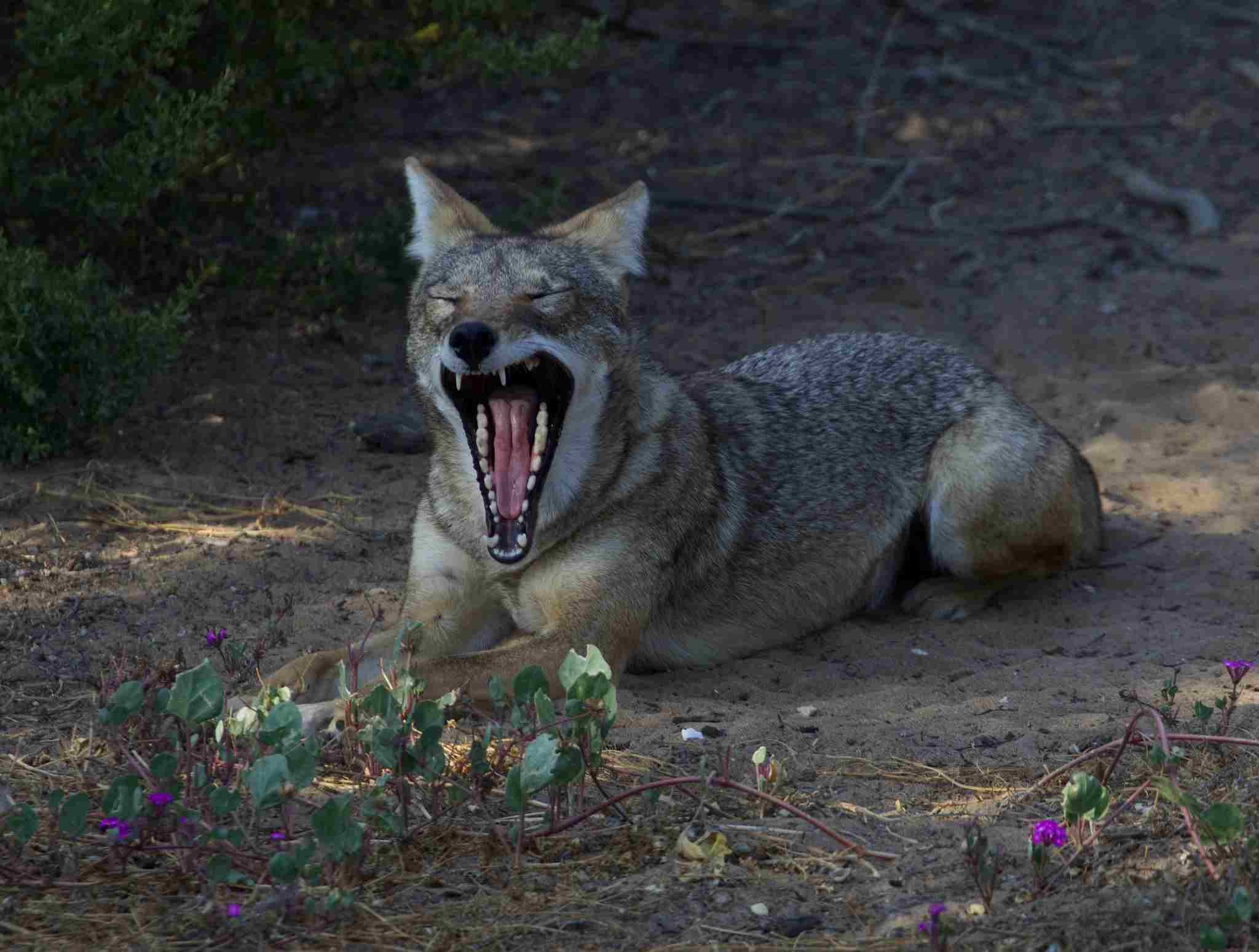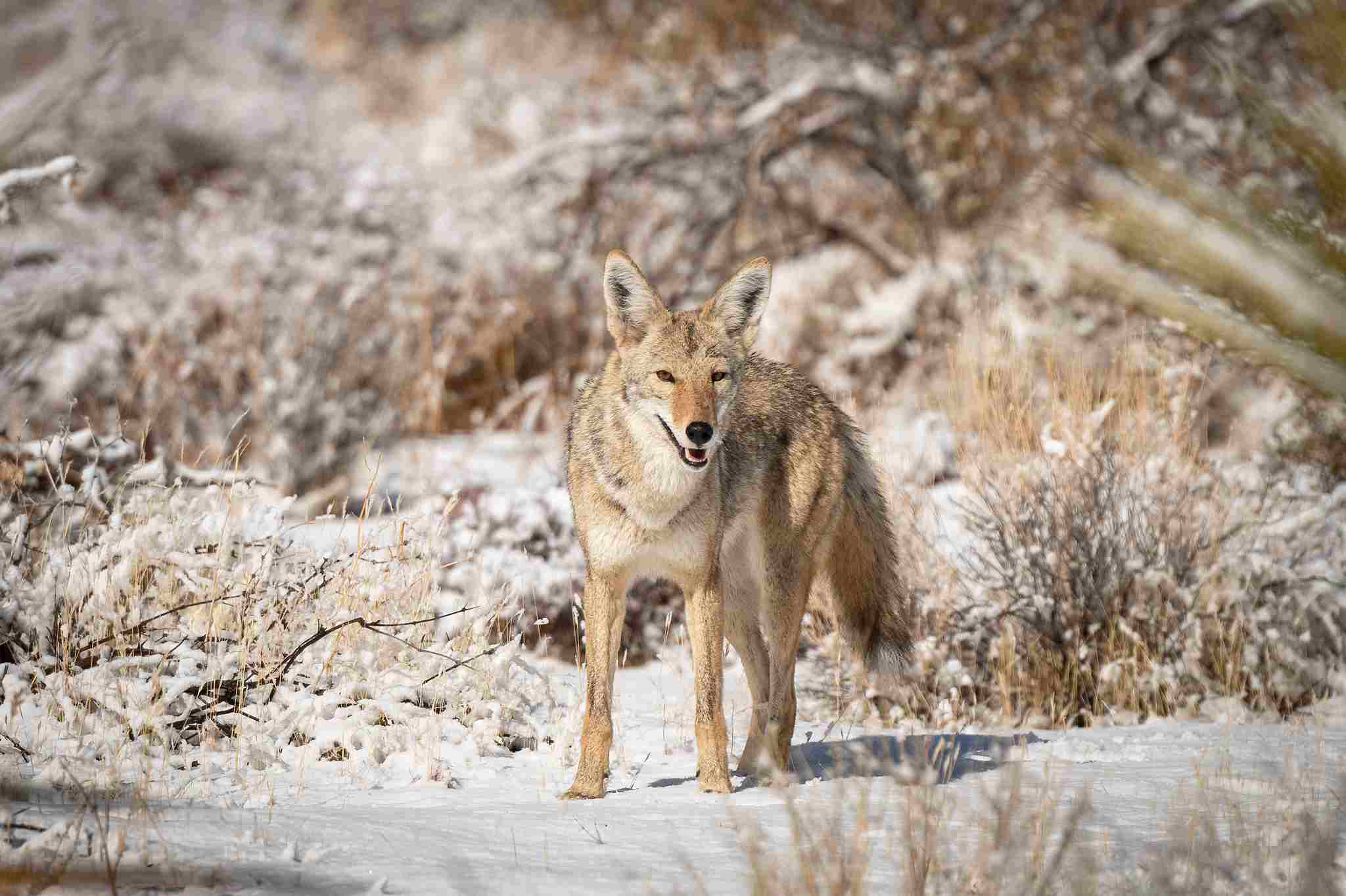Hyena Vs Coyote Size, Weight, Ecological Comparison
Hyenas have a clear advantage over coyotes in a physical confrontation due to their larger size and stronger bite force. Hyenas are significantly larger and heavier than coyotes, giving them the upper hand in a fight.
Additionally, hyenas possess a stronger bite force, which allows them to overpower and kill their opponents more easily. This article will explore various factors that can be used to compare these animals and highlight the reasons why a hyena would win in a fight against a coyote.
Reasons Why a Hyena Will Win a Coyote In a Fight/Physical Confrontation
I). Larger Size
One of the main reasons why a hyena would win in a fight against a coyote is its larger size. Hyenas are significantly bigger than coyotes, which gives them a clear advantage in a physical confrontation. With their robust build and powerful muscles, hyenas have the ability to overpower and dominate their opponents. This size difference allows hyenas to deliver more forceful attacks, making it difficult for a coyote to defend itself effectively.
II). Weight and Strength Advantages
In addition to their larger size, hyenas also have the advantage of greater weight and strength. Hyenas are known for their impressive physical strength, which enables them to take down larger prey and fend off potential threats. Their muscular bodies and strong bone structure give them the ability to deliver powerful blows and withstand attacks from other animals. On the other hand, coyotes, although agile and nimble, lack the same level of strength and weight as hyenas, making them more vulnerable in a fight.
III). Stronger Bite Force
Another factor that contributes to the hyena’s advantage in a fight is its stronger bite force. Hyenas have one of the most powerful bites in the animal kingdom, capable of exerting immense pressure on their prey. This powerful bite allows hyenas to inflict severe injuries and even break bones, giving them a significant advantage over coyotes. In contrast, while coyotes have a strong bite, it is not as powerful as that of a hyena, making it harder for them to inflict serious damage in a physical confrontation.
*Details of Comparison (Hyena Vs Coyote)
1). Taxonomy
The taxonomy of hyenas and coyotes reveals interesting differences between these two species. Hyenas belong to the genus Crocuta, with the spotted hyena (Crocuta crocuta) being the most well-known species. On the other hand, coyotes are classified under the genus Canis, specifically Canis latrans.
While both hyenas and coyotes are mammals and belong to the order Carnivora, they are part of different families. Hyenas are members of the family Hyaenidae, which also includes the aardwolf and the striped hyena. Coyotes, on the other hand, are part of the family Canidae, which includes other canids like wolves and foxes.
Despite their distinct taxonomic classifications, hyenas and coyotes share some similarities in their physical characteristics. Both animals have four legs, fur-covered bodies, and sharp teeth adapted for hunting and scavenging. However, their differences in size, weight, and overall physical capacity set them apart.
2). Appearance
The appearance of hyenas and coyotes showcases distinct differences in their coat, fur, skin, and overall stature.
Hyenas have a unique coat pattern with a mix of brown, black, and white fur. Their fur is coarse and shaggy, providing protection against the elements and potential injuries during confrontations. This coloration also aids in camouflage, allowing them to blend into their surroundings while hunting or scavenging. In terms of stature, hyenas have a robust build with a sloping back and powerful forelimbs, giving them a slightly hunched appearance.
On the other hand, coyotes have a more uniform coat color, typically ranging from grayish-brown to reddish-brown. Their fur is denser and softer compared to hyenas, providing insulation in colder climates. Coyotes also possess a slender and agile build, with a straight back and long legs, enabling them to navigate various terrains with ease.
When comparing the two animals, hyenas have a more stocky and muscular appearance, while coyotes have a leaner and more streamlined physique. These differences in appearance reflect their respective adaptations and lifestyles in their habitats.
3). Size
When comparing the size of hyenas and coyotes, there are notable differences in their total body length and height at the shoulders.
Hyenas are larger in size compared to coyotes. On average, hyenas measure around 4 to 5 feet in total body length, with an additional 2 to 3 feet for their tail. At the shoulders, hyenas stand approximately 2.5 to 3 feet tall. These measurements contribute to their robust and powerful appearance, which aids in their hunting and scavenging activities.
In contrast, coyotes are relatively smaller in size. They typically measure around 3 to 4 feet in total body length, with an additional 1 to 1.5 feet for their tail. At the shoulders, coyotes stand approximately 1.5 to 2 feet tall. Their smaller size and agile build allow them to navigate various terrains and adapt to different environments.
The difference in size between hyenas and coyotes is significant, with hyenas being larger and more imposing. This size advantage gives hyenas an edge in physical confrontations and allows them to dominate their territory. However, coyotes compensate for their smaller size with their agility and adaptability, making them formidable predators in their own right.
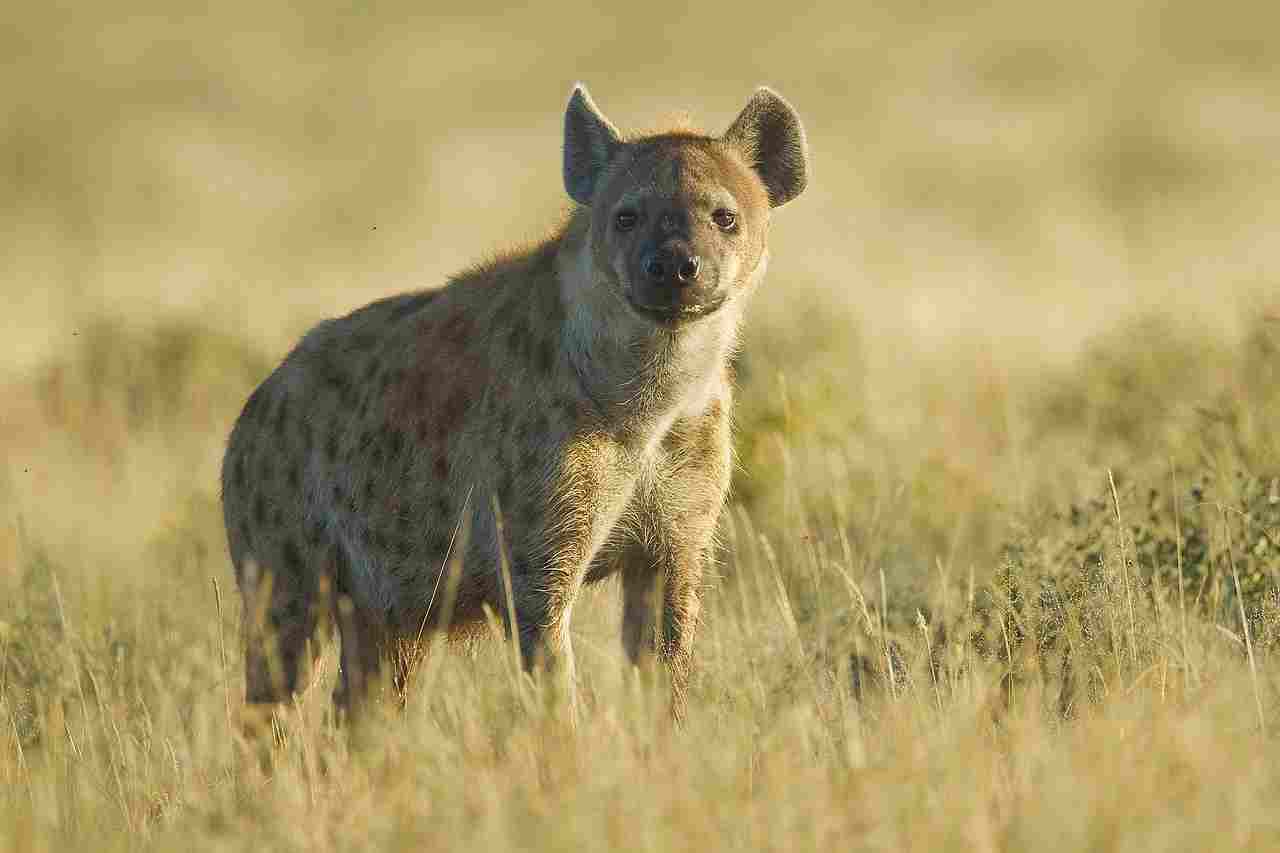
4). Weight
When comparing the weight of hyenas and coyotes, there is a noticeable difference between the two species. Hyenas are significantly heavier than coyotes, which contributes to their overall physical strength and dominance in their respective habitats.
On average, hyenas weigh around 90 to 190 pounds, with the females being slightly larger and heavier than the males. Their muscular build and dense bone structure enable them to take down large prey and scavenge effectively. This weight advantage allows hyenas to assert their dominance over other predators and defend their territories.
In contrast, coyotes are relatively lighter in weight. They typically weigh between 20 to 50 pounds, with the males being slightly larger than the females. Despite their smaller size, coyotes are agile and swift hunters, capable of taking down smaller prey and adapting to various environments.
The weight difference between hyenas and coyotes is significant, with hyenas being much heavier and more powerful. This weight advantage gives hyenas an upper hand in physical confrontations and allows them to overpower coyotes if a fight were to occur.
5). Speed and Agility
Hyenas are known for their impressive speed and agility, despite their larger size. They can reach speeds of up to 37 miles per hour (60 kilometers per hour) in short bursts, allowing them to chase down prey or escape from potential threats. Their long legs and powerful muscles contribute to their ability to move swiftly and cover large distances.
On the other hand, coyotes are renowned for their exceptional agility and adaptability. They can reach speeds of up to 43 miles per hour (69 kilometers per hour) and are capable of quick direction changes, making them highly maneuverable. This agility enables them to navigate through various terrains, including forests, grasslands, and deserts, in search of food and shelter.
While both hyenas and coyotes possess impressive speed and agility, coyotes have a slight advantage in terms of top speed. However, hyenas compensate for this with their endurance and stamina, allowing them to sustain their speed over longer distances.
6). Bite Force
When comparing the bite force of hyenas and coyotes, it is important to consider their respective jaw structures and hunting techniques.
Hyenas have one of the strongest bite forces among mammals, with an average bite force of around 1,100 pounds per square inch (psi). This powerful bite allows them to crush bones and access the nutrient-rich marrow inside. Their robust skulls and strong jaw muscles contribute to their formidable bite force, making them highly efficient scavengers and predators.
On the other hand, coyotes have a bite force of around 150 to 200 psi. While this is significantly lower than that of hyenas, it is still sufficient for their hunting needs. Coyotes primarily feed on small to medium-sized prey, such as rodents, rabbits, and birds. Their bite force is well-suited for capturing and killing these types of prey.
In a direct comparison, hyenas clearly have a much stronger bite force than coyotes. This gives them an advantage when it comes to accessing and consuming tough food sources, such as bones. However, it is important to note that bite force is just one aspect of an animal’s overall physical capacity, and other factors, such as speed, agility, and hunting strategies, also play a significant role in determining their success as predators.
7). Overall Physical Capacity (Which is Stronger?)
When comparing the overall physical capacity of hyenas and coyotes, it is clear that hyenas have the advantage in terms of strength and power. Based on the factors we have evaluated and compared, it is evident that hyenas possess superior physical capabilities compared to coyotes.
In a violent confrontation between these two animals, the hyena’s strength and power would likely cause the demise of the coyote. Hyenas have a much stronger bite force, with an average of around 1,100 pounds per square inch (psi), compared to the coyote’s bite force of 150 to 200 psi. This significant difference in bite force gives hyenas the ability to crush bones and access nutrient-rich marrow, making them highly efficient scavengers and predators.
Furthermore, hyenas have robust skulls and strong jaw muscles, which contribute to their formidable bite force. In contrast, coyotes primarily feed on small to medium-sized prey and their bite force is well-suited for capturing and killing these types of prey.
While bite force is just one aspect of an animal’s overall physical capacity, it is a crucial factor in determining their success as predators. In this regard, hyenas clearly surpass coyotes in terms of strength and power.
8). Habitat
Hyenas are primarily found in the savannahs and grasslands of Africa, with some species also inhabiting forested areas. They have adapted to a wide range of ecosystems, including arid deserts and mountainous regions. This versatility allows hyenas to thrive in various conditions and exploit different food sources.
On the other hand, coyotes are highly adaptable and can be found in a variety of habitats across North and Central America. They are commonly found in open grasslands, forests, deserts, and even urban areas. This adaptability has contributed to their success as a species, as they can easily adjust to changing environments and find suitable food sources.
In terms of geographic range, hyenas have a more limited distribution compared to coyotes. Hyenas are native to Africa and parts of Asia, while coyotes have a much broader range that extends from Alaska to Panama.
Generally, while both hyenas and coyotes have adapted to diverse habitats, hyenas are more specialized in their habitat requirements, primarily found in African savannahs, while coyotes have a wider geographic range and can thrive in various environments across the Americas.
9). Lifespan
When comparing the lifespan of hyenas and coyotes, it is important to consider their different ecological contexts. Hyenas, known for their scavenging behavior, have an average lifespan of 12 to 25 years in the wild. However, in captivity, they can live up to 40 years. This extended lifespan in captivity is attributed to the absence of predation, access to regular meals, and veterinary care.
On the other hand, coyotes have a shorter average lifespan in the wild, ranging from 6 to 8 years. This can be attributed to various factors such as predation, competition for resources, and exposure to diseases. However, in captivity, coyotes have been known to live up to 18 years.
The difference in lifespan between hyenas and coyotes can be attributed to their ecological roles and behaviors. Hyenas, as apex predators, have fewer natural predators and are less likely to succumb to predation. Additionally, their scavenging behavior allows them to access a wide range of food sources, reducing the risk of starvation.
Coyotes, on the other hand, face more competition for resources and are more susceptible to predation. Their smaller size and lower position in the food chain make them more vulnerable to larger predators and other threats in their environment.
Hyenas generally have a longer lifespan compared to coyotes, both in the wild and in captivity. This can be attributed to their ecological roles, behaviors, and access to resources. However, it is important to note that individual lifespans can vary depending on various factors such as habitat quality, availability of food, and exposure to threats.
10). Behavior
Hyenas are known for their unique feeding behavior, which includes scavenging and hunting. They have a highly developed social structure, living in large groups called clans. Within these clans, there is a strict hierarchy, with dominant females leading the pack. Hyenas are also highly vocal animals, using a variety of calls and vocalizations to communicate with each other.
Coyotes, on the other hand, are more solitary animals (in comparison to hyenas). They are opportunistic feeders, adapting their diet to whatever food is available in their environment. While they are capable of hunting, they are also skilled scavengers. Coyotes have a more flexible social structure, with individuals forming temporary pairs or small family groups. They communicate through a range of vocalizations, including howls, barks, and yips.
In terms of parenting, hyenas have a matriarchal society, with females taking the lead in raising the young. Cubs are born with their eyes open and are able to walk shortly after birth. They are highly dependent on their mothers for food and protection. Coyotes, on the other hand, have a more equal division of parenting responsibilities between males and females. Coyote pups are born blind and helpless, relying on their parents for care and nourishment.
Generally, the behavior of hyenas and coyotes reflects their different ecological contexts and social structures. Hyenas exhibit complex social behaviors and specialized feeding strategies, while coyotes are more adaptable and flexible in their behavior.
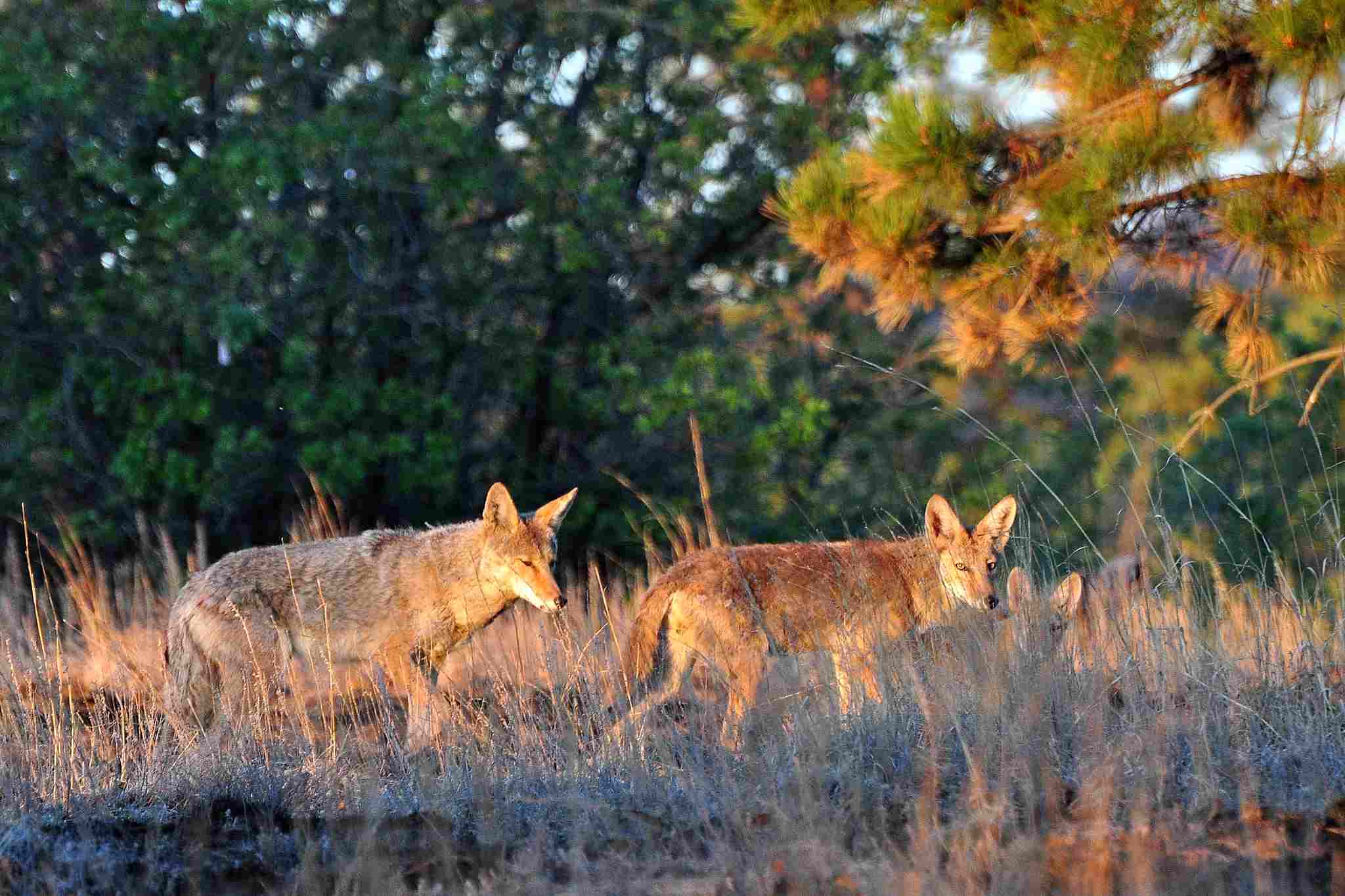
11). Reproduction
Hyenas and coyotes have different reproductive strategies. Hyenas are viviparous, meaning they give birth to live young. The gestation period for hyenas is around 110 days, and they typically give birth to one or two cubs at a time. The cubs are born with their eyes open and are able to walk shortly after birth. They rely heavily on their mothers for food and protection during their early stages of life.
On the other hand, coyotes are also viviparous, giving birth to live young. The gestation period for coyotes is around 60 days, and they usually have a litter size of around 4 to 7 pups. Coyote pups are born blind and helpless, relying on their parents for care and nourishment. Both male and female coyotes play an active role in raising their young, sharing parenting responsibilities.
When comparing the reproductive strategies of hyenas and coyotes, it is clear that they have different gestation periods and litter sizes. Hyenas have a longer gestation period and smaller litter size compared to coyotes. This difference in reproductive strategies reflects their distinct ecological contexts and social structures.
In general, hyenas are viviparous and have a longer gestation period, while coyotes are also viviparous but have a shorter gestation period and larger litter size.
12). Danger Posed to Humans
When it comes to the danger posed to humans, both hyenas and coyotes have the potential to come close to human settlements. However, their behavior towards humans differs significantly.
Hyenas are known to be more aggressive towards humans compared to coyotes. They have been known to attack and kill humans in certain situations, especially when they feel threatened or when food is scarce. Although hyena attacks on humans are relatively rare, they can be extremely dangerous due to their powerful bite force and pack hunting behavior.
On the other hand, coyotes generally avoid direct confrontations with humans and are less likely to pose a significant threat. While coyote attacks on humans are rare, they can occur, especially when coyotes become habituated to human presence or when they feel threatened. It is important to note that most coyote attacks on humans are non-fatal and are usually a result of the coyote feeling cornered or defending their territory.
If you encounter either a hyena or a coyote, it is important to take precautions to ensure your safety. Avoid approaching or cornering the animal, and give it a wide berth to allow it to escape. If you feel threatened, make yourself appear larger by raising your arms and making loud noises to deter the animal. It is also advisable to carry a deterrent such as pepper spray when in areas where encounters with these animals are possible.
Therefore, while both hyenas and coyotes have the potential to come close to human settlements, hyenas are generally more aggressive towards humans compared to coyotes.
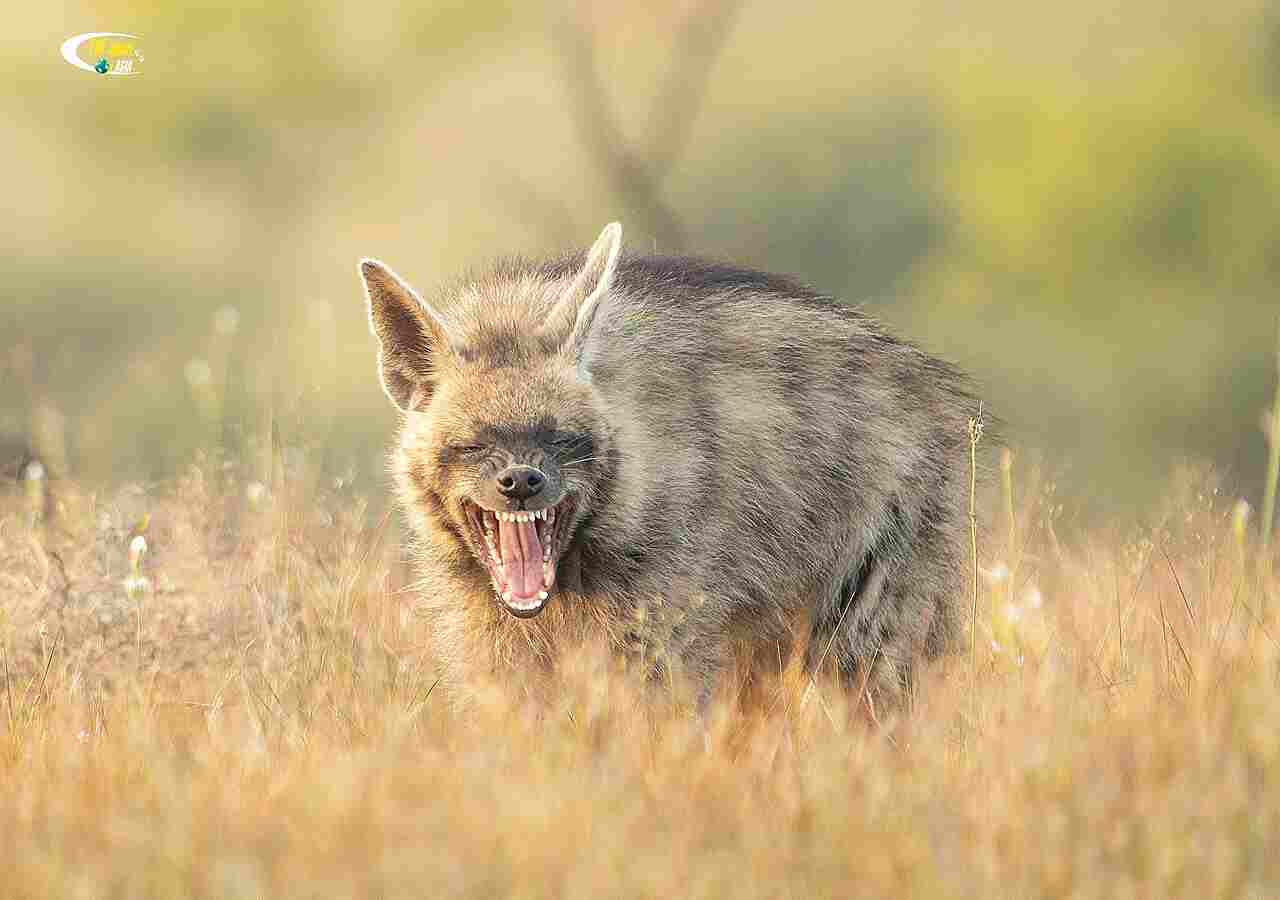
13). Intelligence
Hyenas are highly intelligent animals, known for their complex social structures and cooperative hunting strategies. They exhibit a remarkable level of problem-solving skills, which is evident in their ability to work together in groups to bring down large prey. Hyenas also demonstrate a high degree of adaptability, being able to thrive in various habitats and scavenging for food when necessary.
On the other hand, coyotes are also intelligent animals, although their intelligence is often overshadowed by their adaptability and resourcefulness. Coyotes have shown remarkable problem-solving abilities, such as their ability to navigate urban environments and find food sources in human settlements. They are known for their cunning and ability to outsmart their prey, making them successful hunters.
In terms of which animal is more intelligent, it is difficult to determine definitively. Both hyenas and coyotes have unique cognitive abilities that have allowed them to survive and thrive in their respective environments. Their intelligence is shaped by their ecological niche and the challenges they face.
Both hyenas and coyotes exhibit intelligence in different ways. While hyenas demonstrate complex social behaviors and cooperative hunting strategies, coyotes showcase adaptability and resourcefulness.
14). Tracks
When comparing hyenas and coyotes, their tracks can provide valuable insights into their behavior and movement patterns. Hyena tracks are characterized by their large size and distinct shape. They have four toes with non-retractable claws, and their tracks often show a clear imprint of their paw pads. These tracks can be found in a variety of habitats, including grasslands, savannas, and deserts.
On the other hand, coyote tracks are smaller in size compared to hyenas. They also have four toes with non-retractable claws, but their tracks are more oval-shaped. Coyote tracks often show a clear imprint of their paw pads as well. These tracks can be found in a wide range of habitats, including forests, mountains, and urban areas.
By analyzing the tracks left by hyenas and coyotes, researchers can gain insights into their movement patterns, territorial boundaries, and hunting behaviors. Hyenas are known for their long-distance movements, often covering large areas in search of food. Coyotes, on the other hand, are more adaptable and can navigate through various landscapes, including human settlements.
15). Conservation Status
Hyenas, particularly the African species, are classified as “near threatened” by the International Union for Conservation of Nature (IUCN). The main threats to their survival in the wild include habitat loss, human-wildlife conflict, and illegal hunting. As human populations expand and encroach upon natural habitats, hyenas often come into conflict with humans, leading to retaliatory killings. Additionally, hyenas are sometimes targeted for their body parts, which are used in traditional medicine or as trophies.
On the other hand, coyotes have a more stable conservation status. They are classified as a species of “least concern” by the IUCN. While they may face localized threats such as habitat loss due to urbanization and persecution by humans, their adaptability and wide distribution have allowed them to persist in various environments. Coyotes have successfully adapted to human-altered landscapes, including urban areas, which has contributed to their overall population stability.
While hyenas face greater conservation challenges and are classified as “near threatened,” coyotes have a more favorable conservation status as a species of “least concern.” The main threats to the survival of hyenas in the wild include habitat loss, human-wildlife conflict, and illegal hunting, while coyotes’ adaptability has allowed them to thrive in various environments despite localized threats.
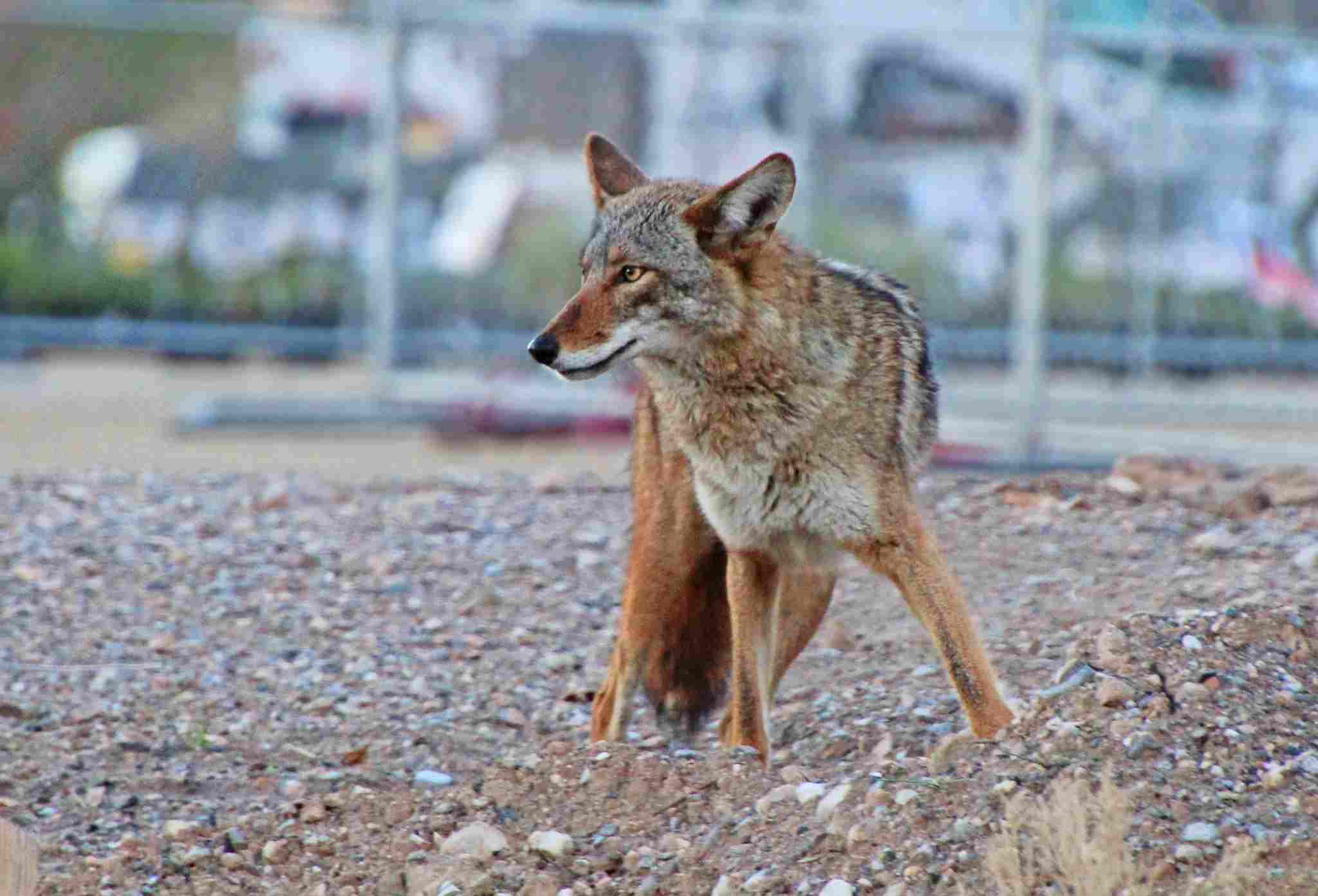
Conclusion
The comparison between hyenas and coyotes reveals both similarities and differences. In terms of similarities, both animals are carnivorous predators that play important roles in their respective ecosystems. They are both highly adaptable and have successfully coexisted with humans in various environments. Additionally, both hyenas and coyotes exhibit social behaviors and live in family groups, although their social structures differ.
However, there are also notable differences between hyenas and coyotes. Hyenas are larger and more robust than coyotes, with a stronger bite force and overall physical capacity. They have a more specialized diet, primarily scavenging on carrion, while coyotes are opportunistic hunters and scavengers, consuming a wider range of prey. Hyenas have a more complex social hierarchy, with females dominating over males, while coyotes have a more egalitarian social structure.
